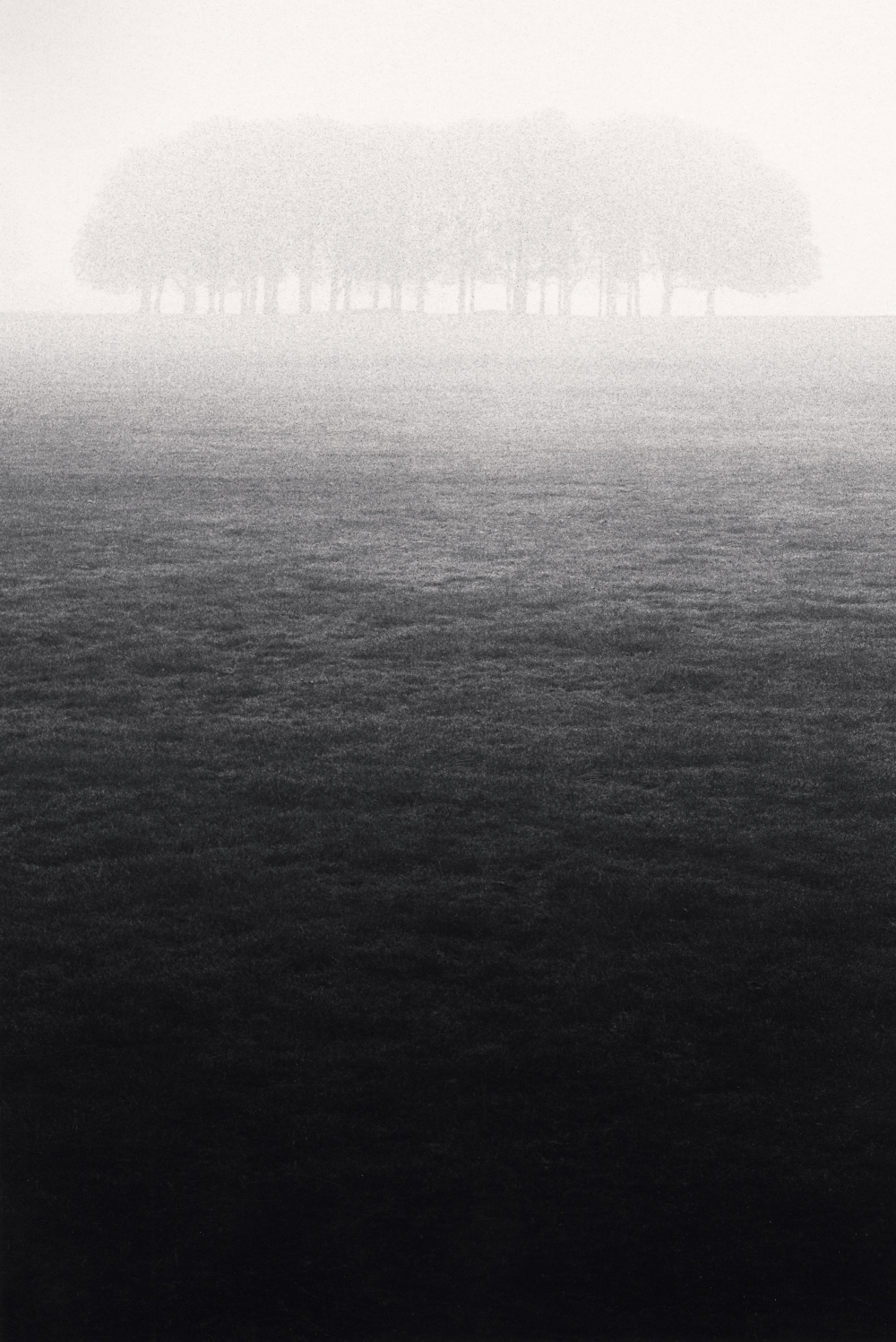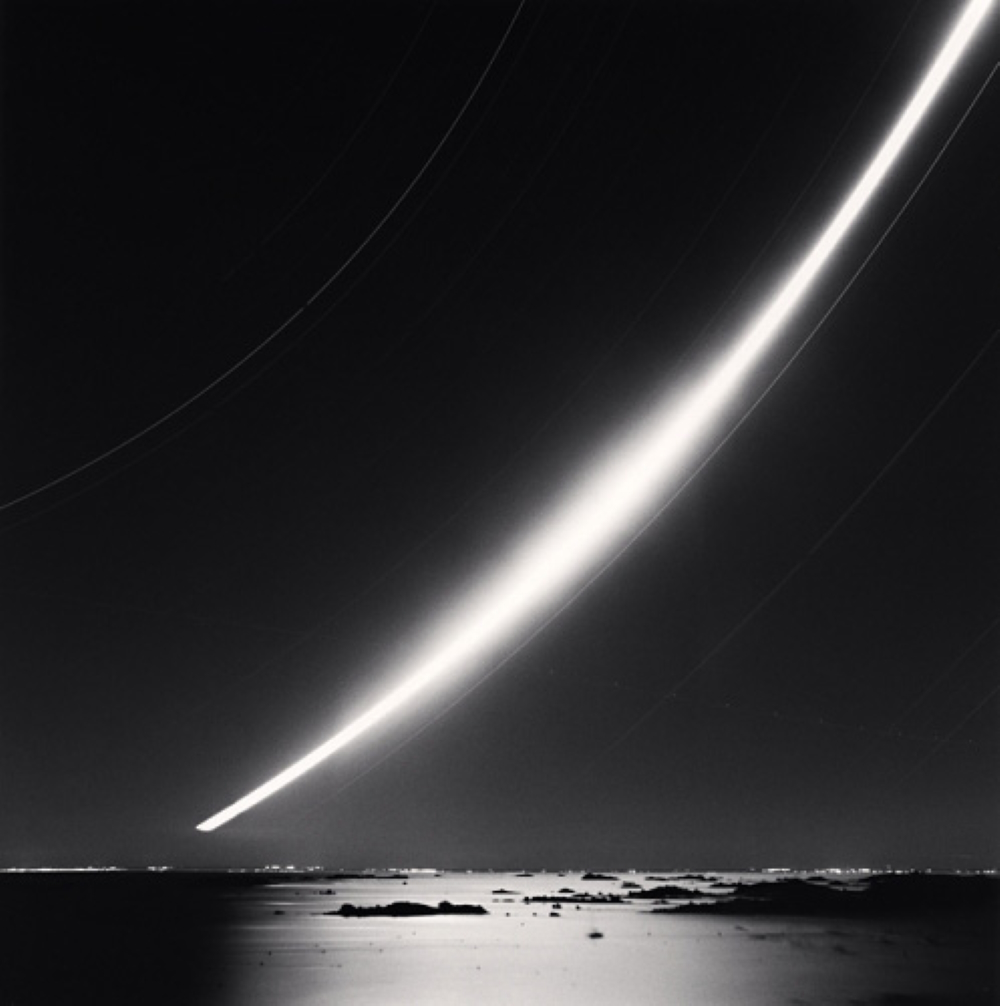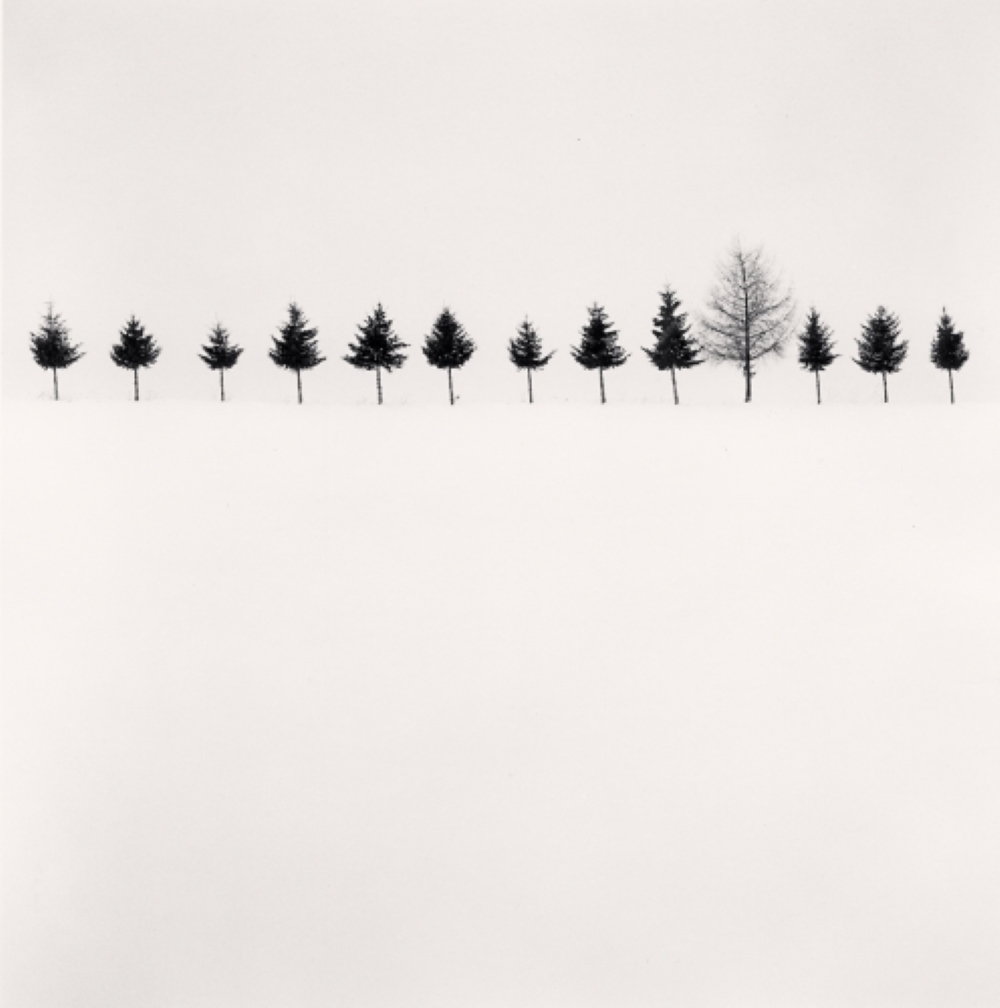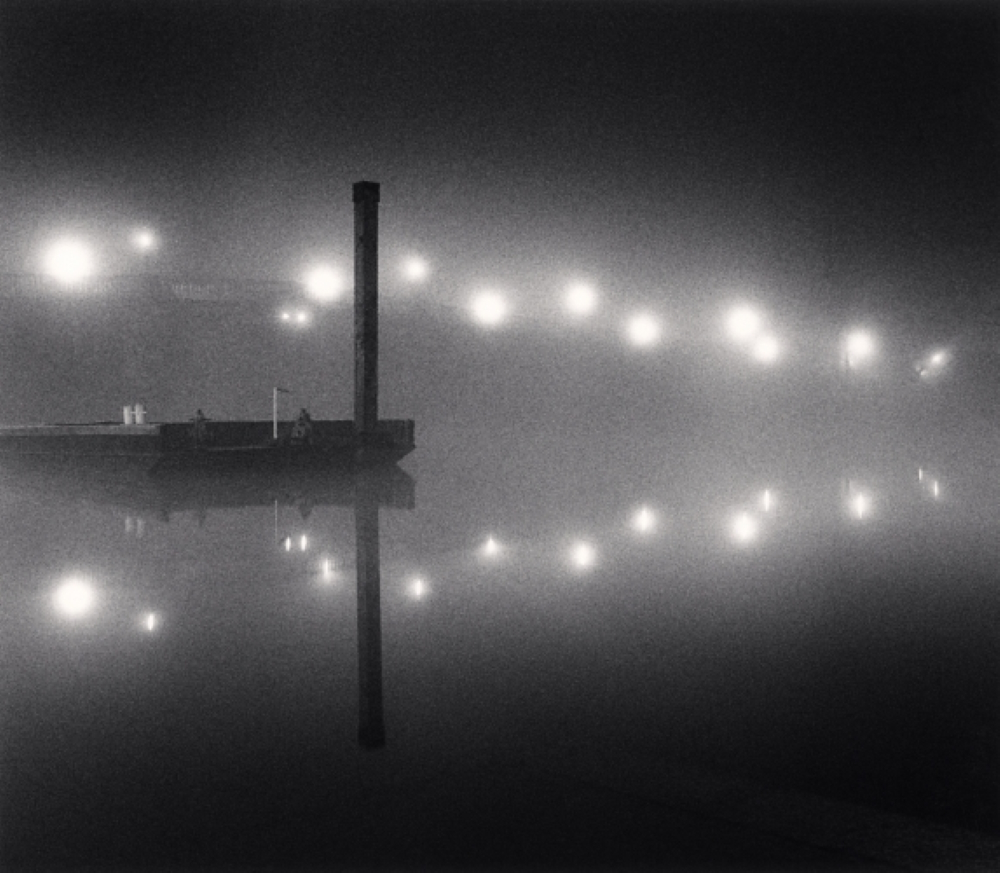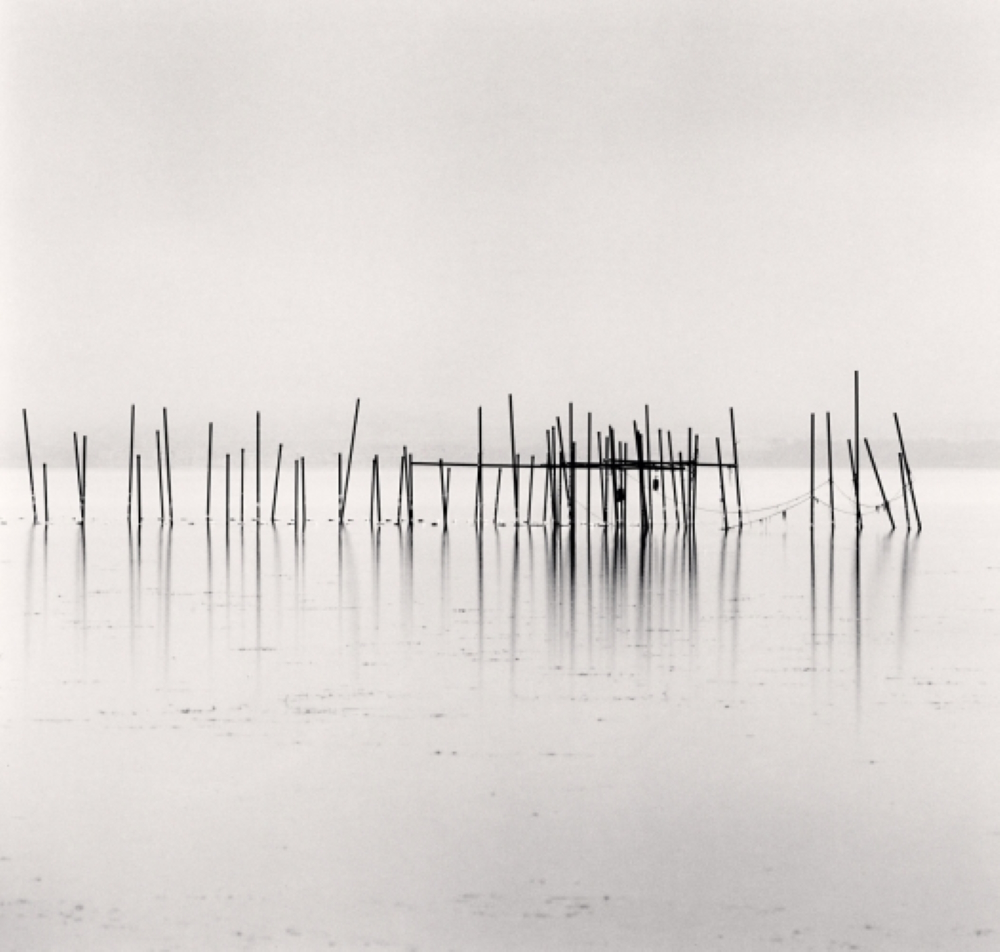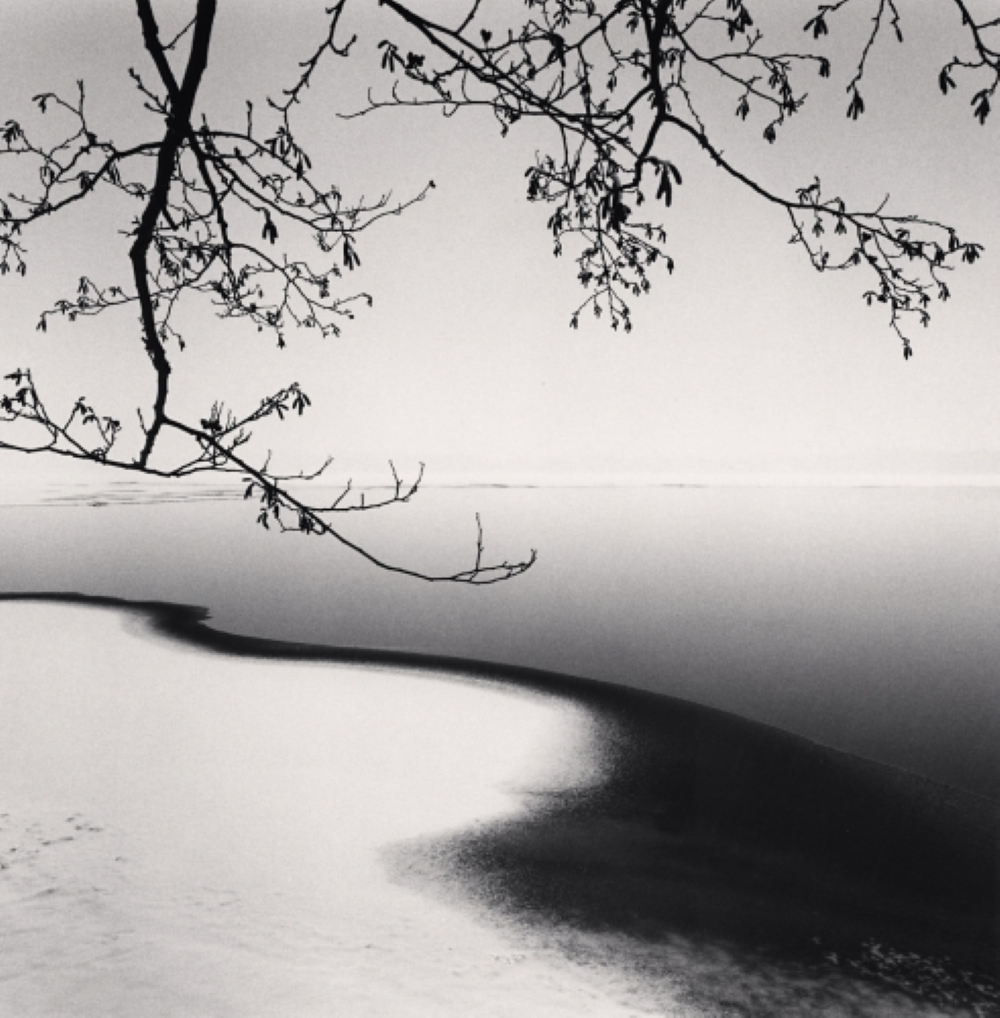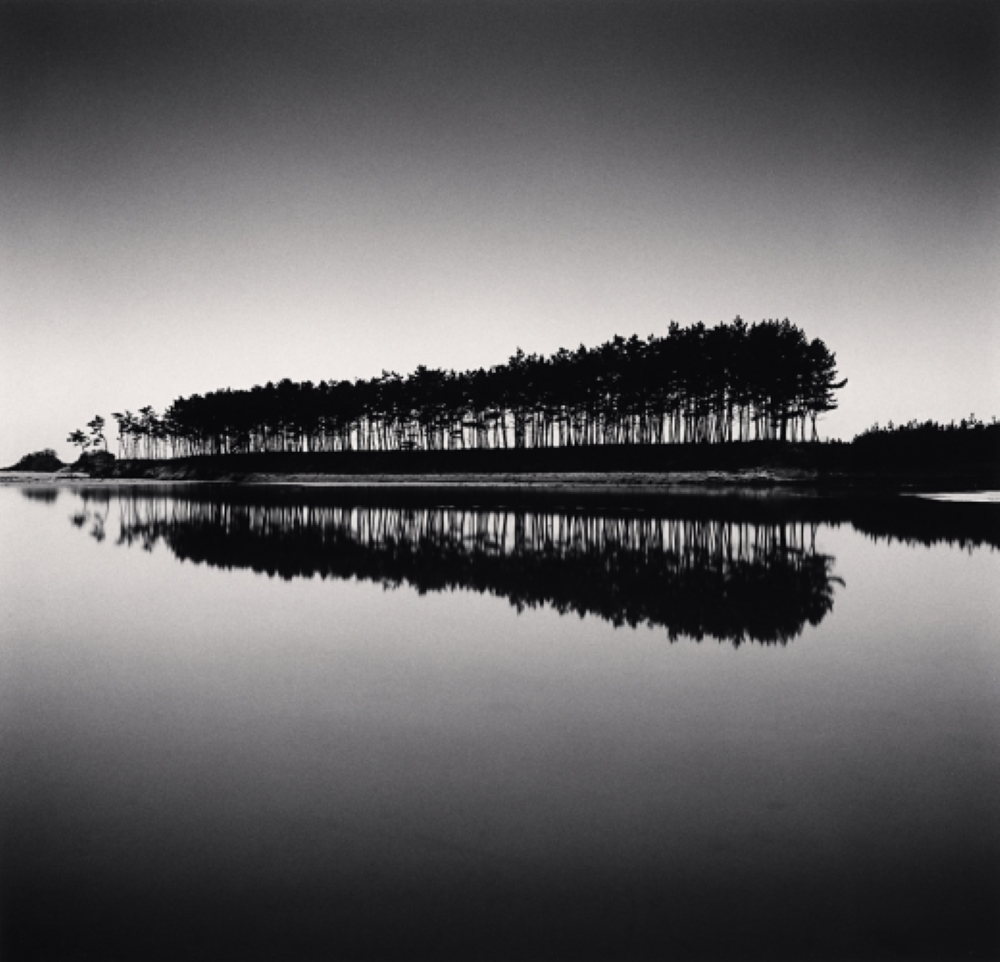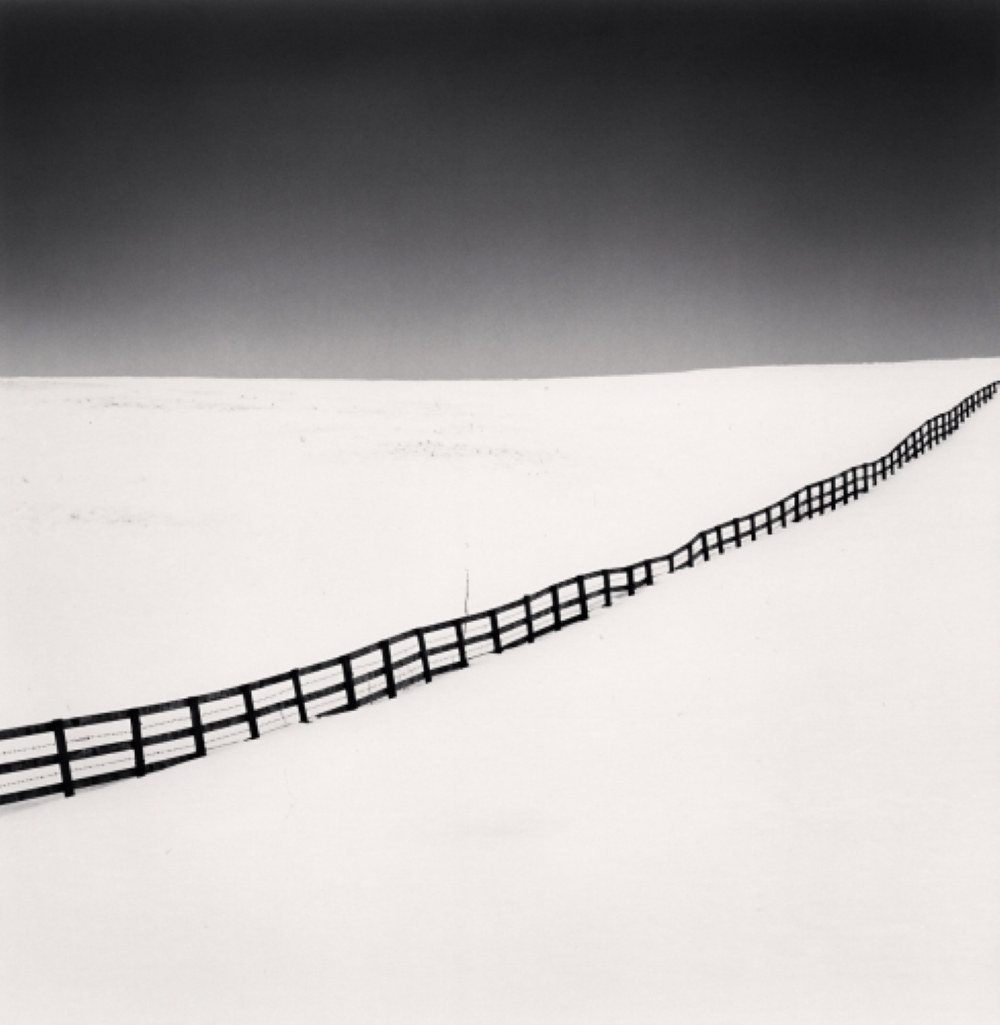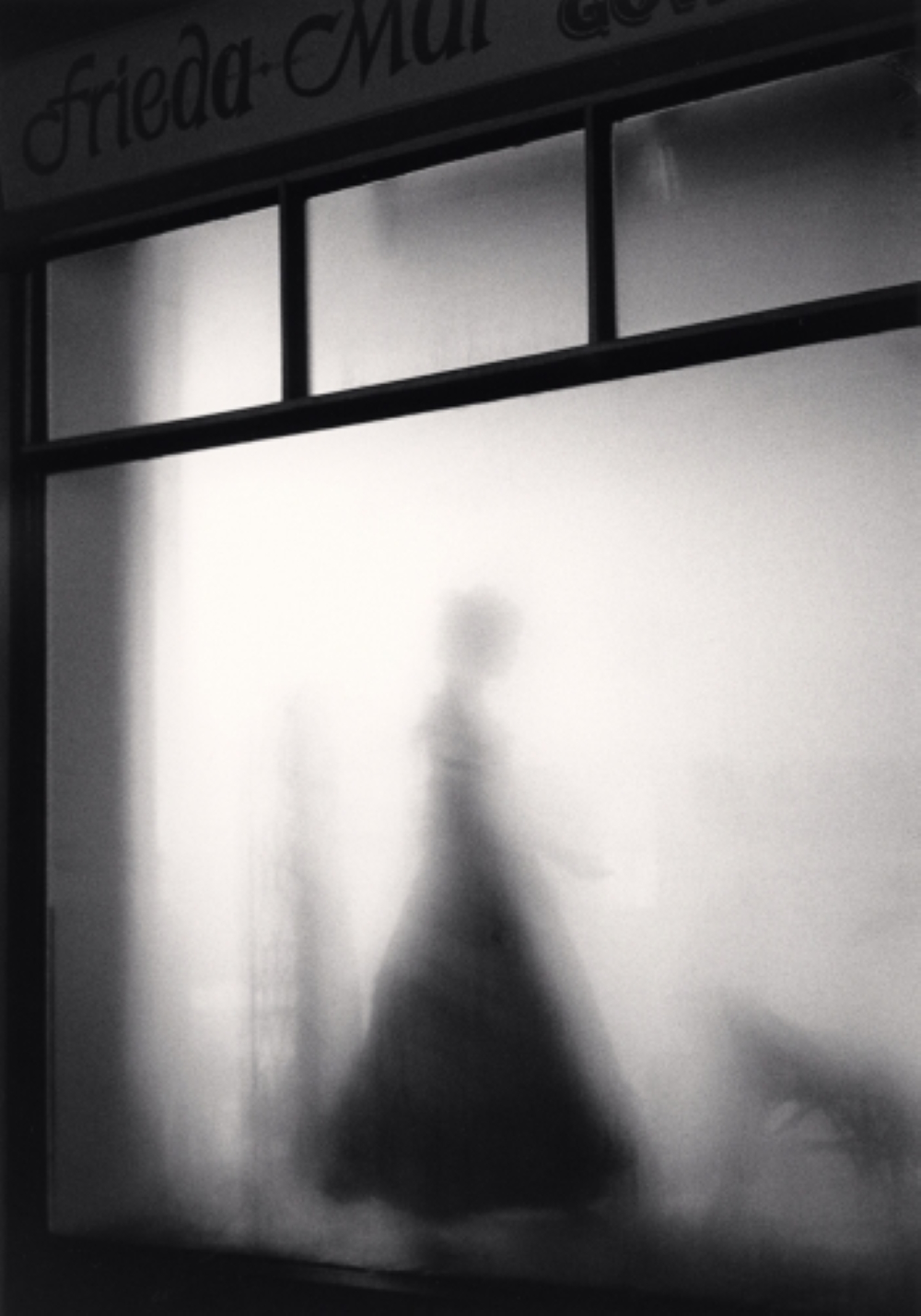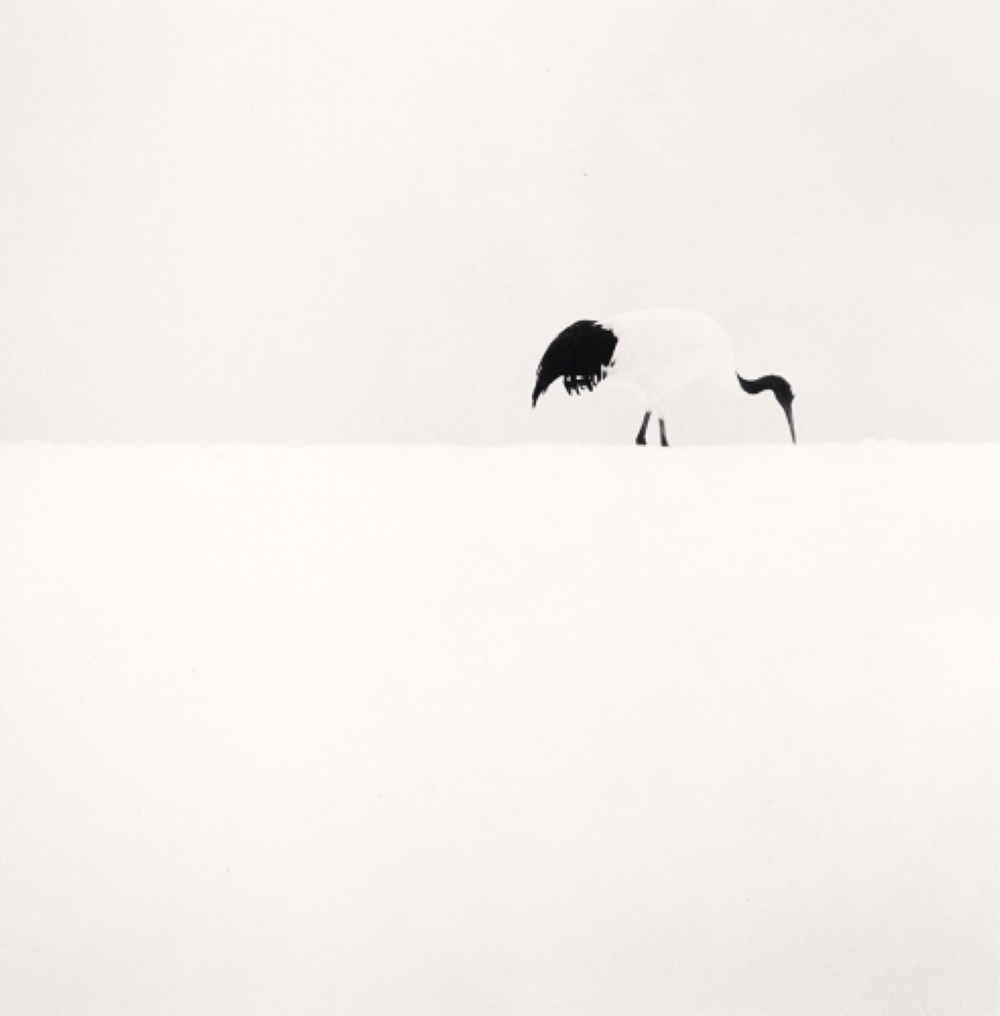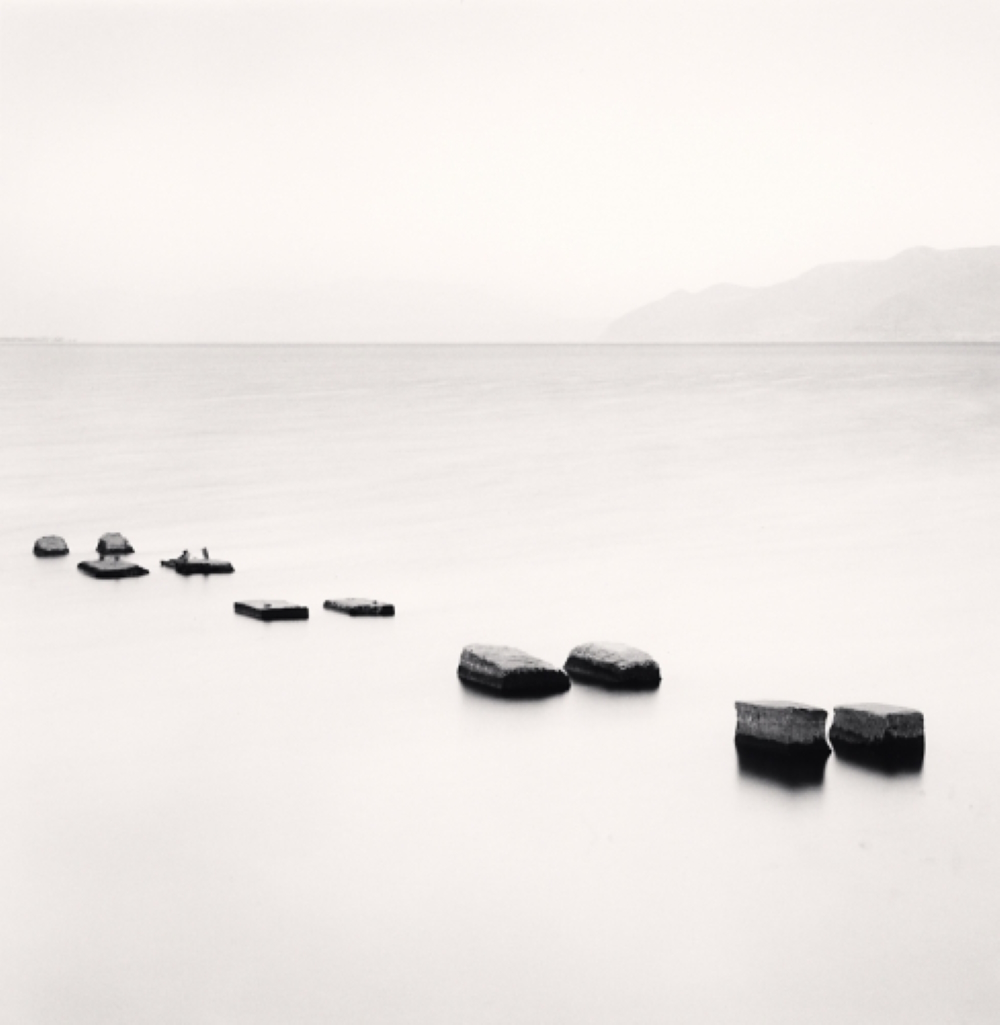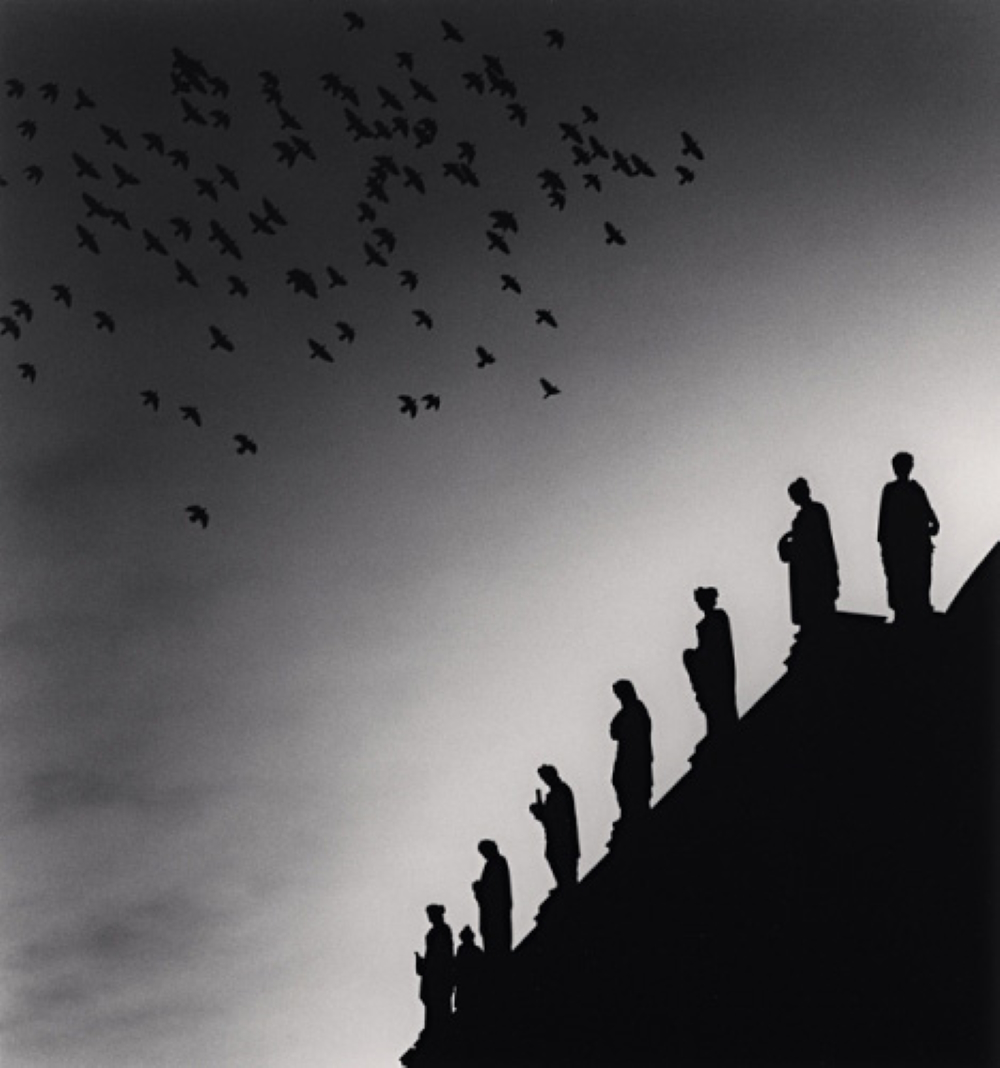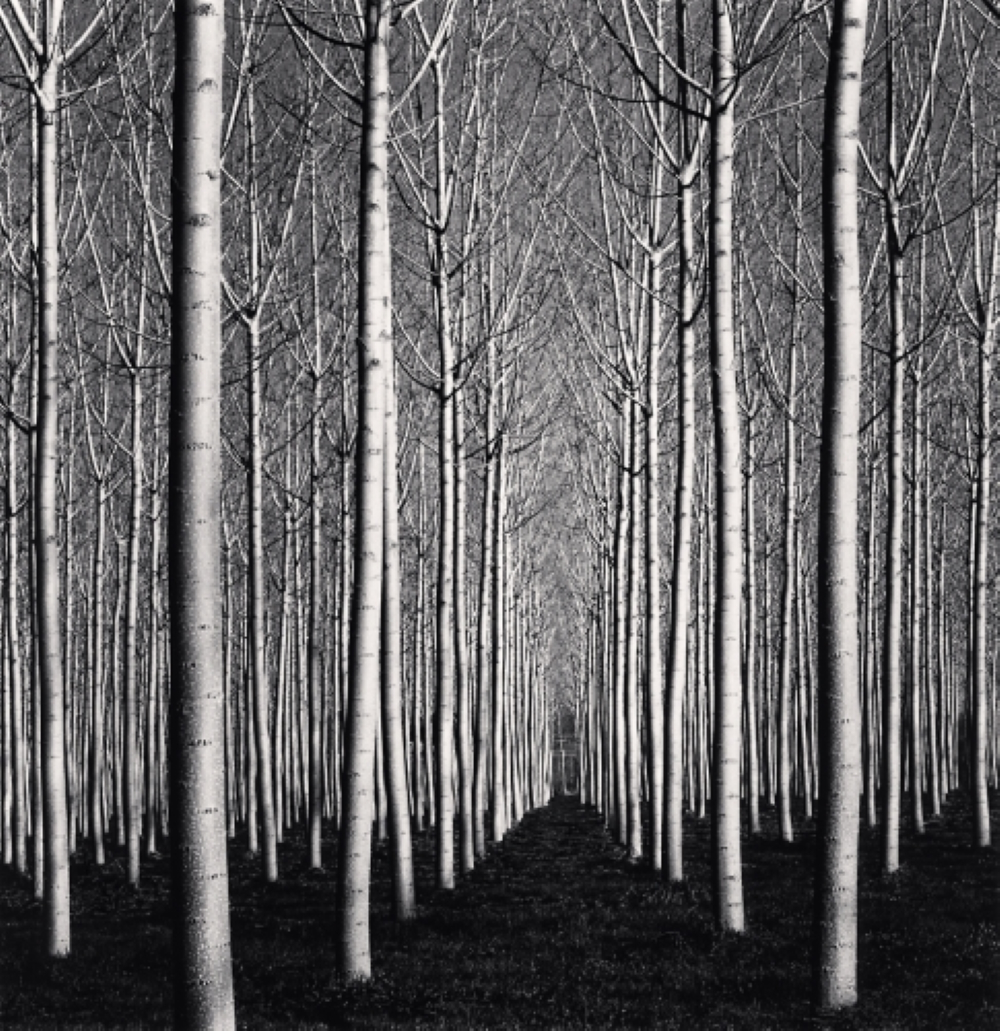Michael Kenna
master of landscape-photographer
UK / US
Minimalist. Ethereal. Graceful. Calm. Solitary. Atmospheric. Subtle. Formal. Keywords as such vividly describe the magnificence of his graphic compositions that show moodaholic, people-less landscapes in monochrome. „These works of art“, states 121clicks.com, „are hard to call photographs for the language it speaks and the silent emotions they provoke.“ Consequently the ‚world class portal dedicated for arts & photography“ titles the multi-awarded maker „a master landscape photographer of our era“. The photographer Ruth Bernhard (1905-2006) called the timeless imagery of her internationally renowned colleague „islands of serenity and tranquility in a loud and chaotic world“.
Michael Kenna
master of landscape-photographer
UK / US
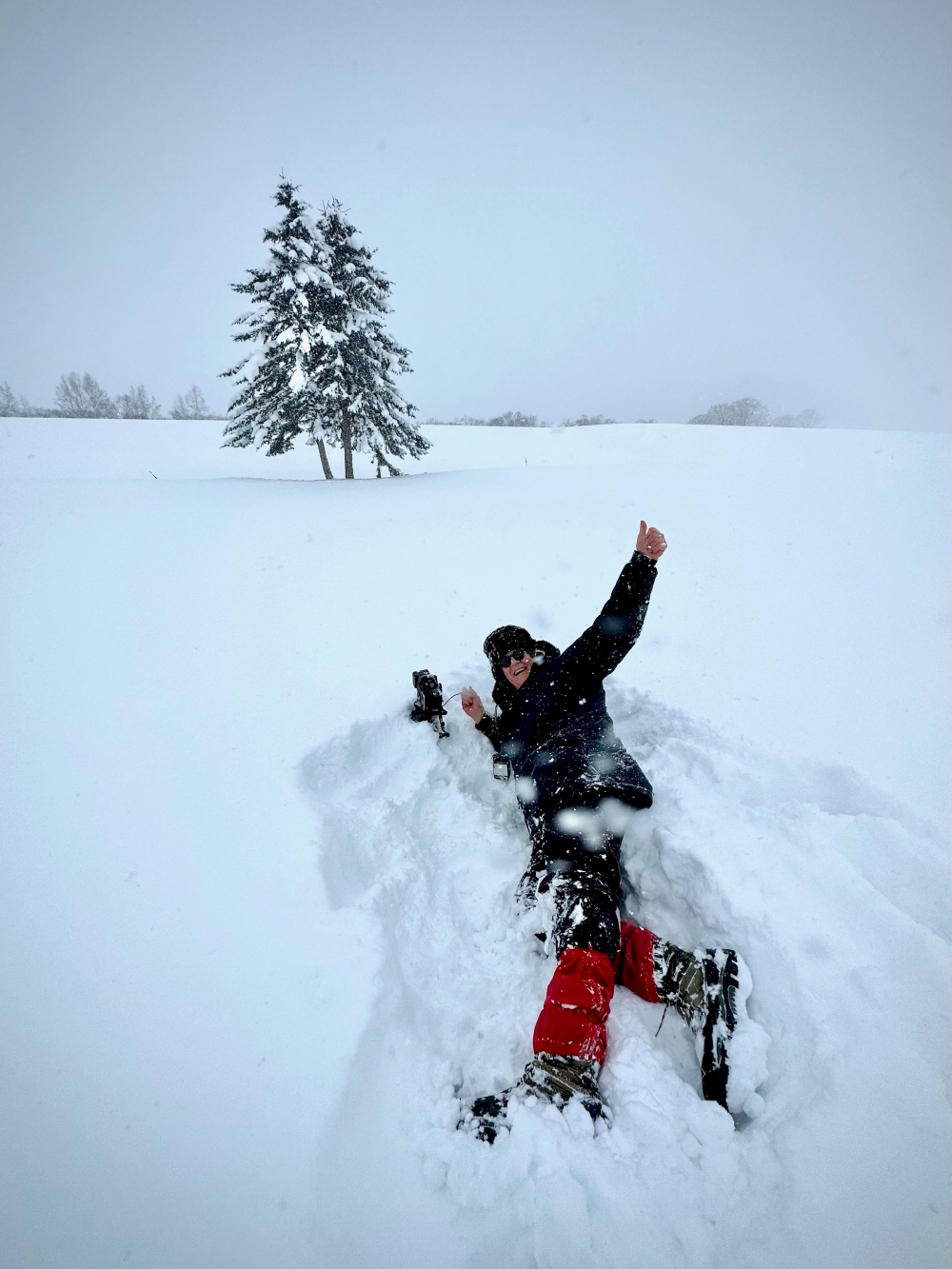
To give his photos the quite appropriate attributes ‚divine and spiritual‘ doesn’t lack a certain irony - especially in the knowledge that Michael Kenna (Born 1953, Widnes, Lancashire, England) studied for 7 years to become a priest. But the son of a poor, working-class, Catholic family „decided against joining the holy priesthood“ (Wikipedia). After having been educated at the seminary school of St. Joseph’s College, Upholland, the talented painter received his first photographic instructions during a year at the Banbury School of Art, before studying commercial photography at the London College of Printing where he graduated with distinction in 1976. Back then every chance to practice the craft commercially was taken – be it for record companies, magazine publications or theatre groups. It was in the same year that the young man had a key experience which made him turn his passion to landscape photography: the visit of an exhibition titled ‚The Land‘ at the Victoria and Albert Museum in London. The organiser, photographer Bill Brandt, became his major influence besides Peter Henry Emerson, Eugène Atget, Brassaï, Mario Giacomelli and Josef Sudek from Europe and the Americans Alfred Stieglitz, Charles Sheeler and Harry Callahan. If Mr. Kenna is addressed regarding any yardsticks, his typical and humble answer is a quote by Isaac Newton „If I have achieved anything, it is by standing on the shoulders of giants!“
1977 brought the move to San Francisco. The immigrant settled in California quickly, made a living as a photographer (including finding the prestigious Stephen Wirtz Gallery to represent him) and worked as the assistant as well as a printer for Ruth Bernhard. The creative licence with the negative to achieve compositional and tonal precision that he learned from her, are of benefit for him to this day as the fan of two dimensional surfaces still patiently makes every meticulous silver print himself in his own darkroom.
As mentioned at the beginning the images of „the guru of black and white photography“ (famousphotograhers.net) radiate a catching calmness. How come? "My dad was a quiet man, he didn't seem to have a need to talk very much“, Michael Kenna writes in the introduction to his book ‚Mont St Michel‘. „We walked pretty much everywhere, and I liked to walk with my Dad...I think the time in-between destinations was most special for me. We didn't need to say very much to each other. Walking, observing, listening, waiting...He taught me that it's alright to walk alone sometimes." And so this creative has a passion for silence, seeking places of solitude and working alone in over 40 countries so far including Brazil, The Czech Republic, China, Egypt, France, Great Britain, Japan and USA.
„I photograph exclusively in black and white“, can be read on boshamgallery.com. „It is immediately more mysterious because we see in colour all the time. It is quieter than colour.“ Weather and certain times of the day play a big role as he prefers dawn or night and mist, rain or snow. „You can’t always see what’s otherwise noticeable during the day. With long exposures you can photograph what the human eye is incapable of seeing.“
Michael Kenna’s unique landscape images with their intimate scale „capture the invisible behind the visible“ (121click.com) and show his personal tendency "to slow down and look for center". They are - if at all - in the tradition of Romantic landscape painters like Caspar David Friedrich, John Constable and Joseph Mallord William Turner.
The other locations that attract MK are man made. Because of his birthplace in the industrial northwest of England he has an empathy for industry and the working environment, being surrounded by abandoned mills back then.
„I find that the absence of people in my photographs helps to suggest a certain atmosphere of anticipation“, Michael Kenna said in an interview with Camera & Darkroom Magazine. „I try to leave space in my photographs so that viewers can participate in the scene and even create their own story. Photographs can be invitations for people to use their own imagination based on their own experiences. We all see a photograph differently as we all see the world differently. I prefer suggestion over specific description, haiku over prose.“
The professional who used Voigtlander, Pentax and Nikon 35m cameras for fifteen years, moved primarily to the Hasselblad medium format in 1986. Occasionally he also uses a plastic Holga camera. Michael Kenna works in the traditional, non-digital style. „I suggest though, that if we strive for perfect, digitally processed images and prints, the further away we might get from our own fallibility and accident prone humanity“, is to be read on thenocturnes.com. „My life seems to have flowed and flowered on accidental fortune, so has my photography. Many of my stronger photographs are the result of my option not to pre-visualize. I believe that it's important to allow the possibility of accident and not be too controlling.“
The Anglo-American who has received numerous notable honors for his works such as the esteemed award of Officer of the Order of Arts and Letters from the French Ministry of Culture has ninety books devoted to him. He can refer to five hundred one-person exhibitions and over four hundred group exhibitions in galleries and museums throughout the world. His prints are also included in well of over a hundred permanent institutional collections. Besides his arty work Michael Kenna has also taken on commercial jobs for adidas, Audi, Bank of America, BMW, British Airways, DHL, Huawei, HSBC, Jeep Chrysler, Landrover, Maserati, Mazda, Mercedes, Moët & Chandon, Nissan, Range Rover, Rolls Royce, The Royal Airforce, Saab, Shiseido, Toshiba, Triumph and Volvo. Considering this impressive list of clients his strong belief has proven true: „Fortune favors the one who works hard!“
A member of Arts London Alumni revealed on boshamgallery.com the overall approach of MK‘s art projects that often take seven or eight years to complete: „I am interested in finding and creating calm shelters from the storm, places where quiet and solitude is encouraged and inner contemplation possible. I think we could all use a break from time to time.“
Michael Kenna and his wife, Mamta, live in Seattle, Washington, U.S.A. .
Interview February 2023
Visual islands of rest and contemplation: less is more!
INTUITION/IMAGINATION
How does intuition present itself to you – in form of a suspicious impression, a spontaneous visualisation or whatever - maybe in dreams?
Intuition is whimsical and chimerical, unpredictable and uncontrollable. The most important aspect, I believe, is just to be open to it and appreciative. Ideas have wandered into my head at the oddest times, while running, driving, printing in the darkroom, and on dates with my wife! If we accept that we do not generate intuition, but are grateful recipients, far less less stress, angst and anxiety is included in the equation.
Will any ideas be written down immediately and archived?
All ideas should immediately be written down or documented in some way, otherwise there is a real danger they will disappear into the ether or to a more worthy and receptive artist.
?: How do you come up with good or extraordinary ideas?
For me it is the same stratagem - to always be open to ideas. I find that when working, perhaps on completely different projects, ideas will inevitably float in. It is extremely rare for me not to have three or four projects on the go at the same time. I have often wished for a clone or two to be able to manifest all the possibilities.
?: Do you feel that new creative ideas come as a whole or do you get like a little seed of inspiration that evolves into something else and has to be realized by endless trials and errors in form of constant developments up until the final result?
Ideas are rarely received in their entirety. It is the responsibility of the artist to engage and collaborate with an idea in order to bring it to fruition.
What if there is a deadline, but no intuition? Does the first fuel the latter maybe?
Let’s be real - we live in a world of deadlines and to be considerate of others, punctuality is important and appropriate. If necessary, I will work days and nights to meet any and all deadlines.
INSPIRATION
What inspires you and how do you stimulate this special form of imaginativeness?
Life inspires me. Love inspires me. Our existence inspires me. Embracing the miracle and mystery of our universe inspires me.
?: How do you filter between ideas worthwhile pursuing and bad ones that you just let go of?
It is the same criteria we use when deciding which friends and loved ones we choose to be with. We must trust our instincts and inner voice to guide us to projects that will give us satisfaction based on our personal priorities and what makes us tick. For some it is money, for others fame, but the list of pointers is endless: intellectual knowledge, spiritual fulfillment, mastering of craft, adoration of fans, fulfillment of our destiny, and so many more.
Has it to appeal to you primarily or is its commercial potential an essential factor?
If we are independently wealthy, then perhaps commercial aspects may not be a consideration. But, for most of us mere mortals, there will always be a balance of risk and survival.
Do you revisit old ideas or check what colleagues/competitors are up to at times?
I have little to no interest in what other photographers are doing. I have no doubt that absolutely wonderful and creative happenings are going on while I choose to live in my own, somewhat solitary world of creativity. The bottom line is that time is of the essence. We only have a little and must choose our own ways to reach the greatest potential possible.
CREATIVITY
Which time/place/environment suits your creative work process the best (tranquillity or pressure) and which path do you take from theory/idea to creation?
I prefer quiet, solitude and tranquility, but have learned to live under pressure also. It can be limiting and self defeating to restrict ourselves to only working in our preferred and optimum conditions.
What is better in the realization process: speed and force creativity i.e. grasp the magic of the moment, or a slow, ripening process for implementation/elaboration?
There is no better or best, only the consistent acceptance that we will do our utmost to relish the creative forces which we are given and the opportunities that present themselves.
?: Do you have any specific strategies you use when you are feeling stuck creatively?
Don’t just sit there do something. Don’t just do something, sit there. Both options are viable and can be catalysts for creativity. Everybody has the potential to create. It is only a matter of acceptance and getting on with it.
How important are self-doubt and criticism (by others) during such a process i.e. is it better to be creative on your own, only trust your own instincts, or in a team?
I am guided by the wise words of the theologian Paul Tillich: Doubt is central to faith. Once dogma is accepted, I don’t see a path forwards, only containment. Criticism can be healthy and educational, but it should also be taken with a grain of salt. I don’t believe that blind acceptance of another's viewpoint is healthy. How and why would somebody else know better? A third party agenda has to be examined and seriously considered. Artists need to believe in themselves without being arrogant and self absorbed.
Should a creative always remain true to him-/herself including taking risks & going against the flow or must one, for reasons of (commercial) survival, make concessions to the demands of the market, the wishes of clients and the audience’s expectations?
Challenging, questioning, competing and fighting for one’s own viewpoint can be a manifestation of narcissistic stubbornness. It can also be an honest and pure reflection of a uniquely creative spirit. Each and every artist must decide what best fits their character.
How is innovation still possible if one has established a distinctive style and, just in case, is it good to be ahead of one’s time even one hazards not being understood?
Being different, just for the sake of being different, is not particularly interesting to me. We are all collaborators, taking and using what has already occurred and adding our own, sometimes quite small, additions and contributions. We are all part of a moving stream of consciousness. Being aware and adjusting our ego accordingly, gives us license and freedom to explore and continue the chain of creativity.
When does the time come to end the creative process, to be content and set the final result free - or is it work-in-progress with an endless possibility of improvement?
Life is not over until it is. Personally, various logistics such as exhibitions, book publications and public manifestations denote the conclusion of various chapters, but nowhere is it written that creativity cannot or should not continue. How many times have we seen new versions of established creations? Beauty is in the mind of the beholder, and there are an indefinite number of beholders around every corner. It is fine to be proud of our art works and ready to move on to other greener pastures, but, in my opinion, nothing is ever truly finished.
?: In case of failure or - worse - a creativity crisis how do you get out of such a hole?
It is a well worn cliche and truism that success is usually the result of many failures. Failure = practice = better luck next time. Failure is not crisis, it is an integral part of the process.
SUCCESS
Should/can one resist the temptation to recycle a ‘formula’ one’s successful with?
I think most artists have little interest in resting on their laurels and doing the same thing over and over, albeit success may breed some contentment. The idea that we can continually change our creativity is seductive and attractive, but realistically we can only do what we can do. Sometimes, that means repeating formulas even as we try to challenge ourselves to move out of our known creative hunting grounds.
Is it desirable to create the ultimate/timeless work, but doesn’t “top of the ladder” bring up the question of “what’s next?” i.e. isn’t such a personal peak “the end”?
This reminds me of a childhood game I played called "Snakes and Ladders”. One minute you are up at the top of a ladder and the next, you slide down the snake. I love being in the moment, completely present, as if the past and future doesn’t exist. The famous photographer Bill Brandt once said: "Photography is not a game. There are no rules". Unlike football teams, at least in my profession, artists do not end up on the “top” of their division. We reach for the sky, and if we are fortunate, very occasionally we might get close, but this is just an illusion. Art, like life, is a journey. We can choose to stop and get off the path at any point, but there is no top and bottom in the trip.
MY FAVORITE WORK:
Trees, Richmond, Surrey, England, 1975
Choosing a “favorite” image is neither easy, nor something I like to do at the expense of others. However, I am as happy today with "Trees, Richmond, Surrey, England. 1975” as I was 48 years ago. At the time, I was a student and had just rented a room in Richmond. I would walk along the River Thames early in the morning before taking the tube into London to attend classes at the London College of Printing. This picture was made on one of those walks and is a hand held, 35mm exposure, of a copse of trees next to some local football pitches. Looking back now, I think it contains the essence of my approach to photography, and perhaps even to life.
As viewers, we are invited to move from a dark foreground, (helped along in the darkroom), walk across the field, and enter a distant veiled copse of luminous trees. There we can wander, dream, meditate, imagine, pray, sing, or just get lost in the mist. Trees, Richmond has a simple, minimal and symmetrical composition. Suggestion and imagination are emphasized more than description and documentation. Grain is very noticeable. This photograph constantly reminds me to stay alert and notice the mystery ever present in the commonplace and ordinary.
There are so many reasons that I still love Trees, Richmond. It seems timeless, even though it has been my constant companion for almost five decades. I think it references my photography hero, Bill Brandt, even before I knew his work. It is certainly a precursor of my minimalist work in Japan, and an early marker for my lifelong passion for trees. It reminds me of my early student days when I hadn’t a clue what I was doing in photography, and it keeps me humble by showing me how little I have learnt since.
